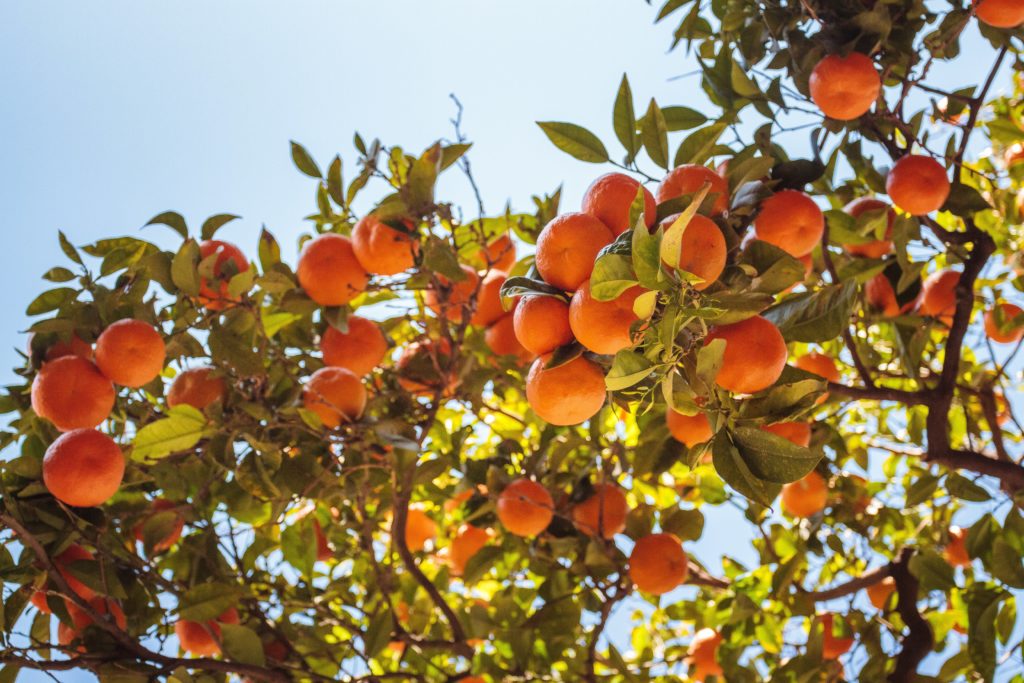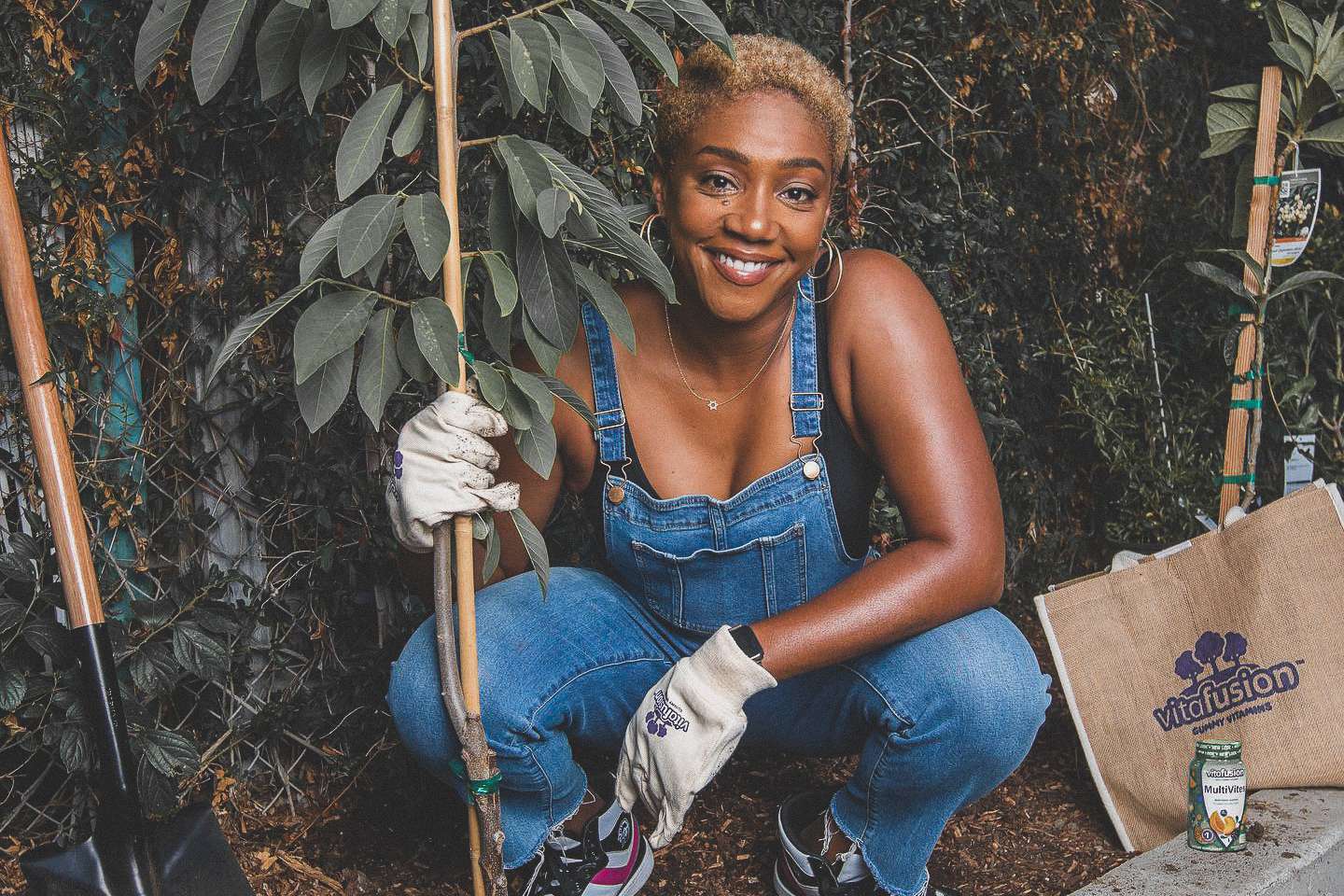Comedian and actor Tiffany Haddish planted fruit trees for underserved communities in Los Angeles last month.
Tiffany Haddish may have won an Emmy and a Grammy, but the “Like a Boss” star doesn’t let it get to her head.
“I am really middle class,” she told Extra last month. “I still live in South Central Los Angeles.”
It wasn’t that long ago that the recent Discovery Channel Shark Week guest host experienced homelessness. Haddish recounted the experience last year in an interview with Today’s Sunday Sitdown.
“I would always pull up 5 to 10 minutes late (to a comedy camp) so no one could see my car because I had all my clothes and suitcases in my car,” Haddish said. Fellow comedian and “Night School” co-star Kevin Hart helped Haddish get back on her feet.
“He gave me 300 bucks and was like ‘Find yourself a place for the week. And then write out a list of goals of what you want to do then start accomplishing those goals.'”
Haddish gives back
Now, as Haddish is one of Hollywood’s biggest stars, she’s keen on giving back to the community she still calls home. In a partnership with vitamin brand Vitafusion (stylized “vitafusion”) and The Fruit Tree Planting Foundation (FTPF), Haddish helped to bring fruit tree orchards to those in need in Los Angeles.
“You know I love vitafusion gummies, and they’ve partnered with The Fruit Tree Planting Foundation to plant fruit trees in underserved communities in support of their mission of delicious nutrition for all,” Haddish wrote in an Instagram post.
The Fruit Tree Project brought ten fruit-bearing trees to the Pico Union Project community center and distributed 35 to local at-risk families. At Tenth Street Elementary, 21 trees were planted and seven were distributed. Thirty trees were planted at the Church of Our Savior to support its food bank program.
Food deserts in Los Angeles
“I live in a food desert, and you don’t see many fruit trees around in the community,” Haddish told Extra. A food desert is described as an urban area where at least 33 percent of the population have no access to a supermarket or large grocery store within one mile of their home (or ten miles in rural areas). The USDA estimates this affects nearly 20 million Americans, about 6 percent of the population.
“I remember being a kid and being told to go outside and I can’t keep going in and out the house, and when we would get hungry we would climb up in my grandma’s fruit trees in our backyard and we would eat, you know, and we were getting healthy fruits and veggies,” Haddish said.
Fruit trees also helped support Haddish while she was living out of her car. “When I was homeless, I used to be driving through the neighborhood, I said, ‘Oh, is that a kumquat tree?’ I would get me some kumquats. ‘Oh, is that an orange tree?’ I’d get me some oranges. Because I wasn’t really eating a lot of fruits and vegetables because… I was homeless.” It was a big part of the reason she wanted to support Vitafusion and FTPF on this project, as it helps to provide an ongoing food source for the 60,000 people in Los Angeles experiencing homelessness every year.
The Fruit Tree Project
“We were thrilled to have vitafusion friend and supporter Tiffany Haddish join us in Los Angeles to support our efforts to create orchards for a school, community center, and church food bank that will distribute fresh fruit directly to those in need,” FTPF’s TreeEO Cem Akin told Ethos via email. “The most successful projects are those with legitimate community buy-in, where different groups join together, including families, nonprofits, corporations, dignitaries, and municipal governments.”
Over the last five years, FTPF and Vitafusion have delivered fruit trees to more than 200,000 families across the planet. The orchards are a food source, but they’re also a recurring source of income for many, too.
Read: All of Los Angeles Is Now a Certified Wildlife Habitat

“One memorable example illustrating the results of this groundbreaking program came before us last month as we returned to a location where we had previously worked with communities in El Salvador,” Akin said. “As we sat under the shade of thriving mango trees we had planted several years ago, we learned that all the families in the village were receiving substantial nutrition and income from the harvest of those trees.”
According to Akin, the project is seeing similar results in the U.S., where the partnership has helped to bring 85 orchards to public schools, parks, food banks, community gardens, and Native American communities. “Each project has it’s unique flavor (literally!) and results, whether the orchard provides food for at-risk individuals, environmental education for students, or clean air, water, and soil for vibrant ecosystems.”
Learn more about Vitafusion’s Fruit Tree Project here.


